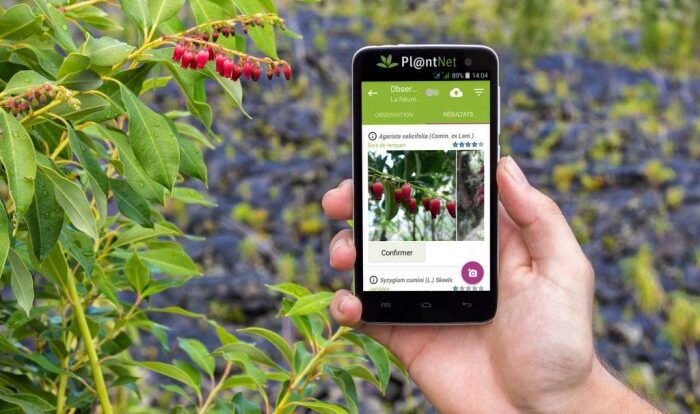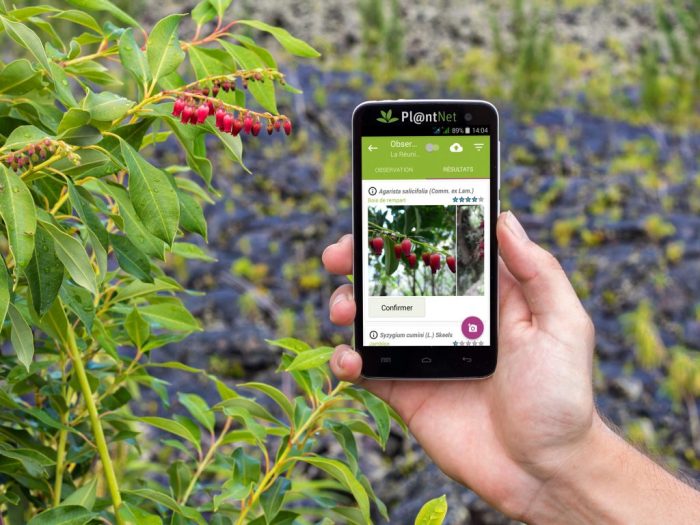
The best free plant identification app is here to revolutionize your plant knowledge. With its advanced features and user-friendly interface, identifying plants has never been easier. Whether you’re a seasoned gardener or a curious nature enthusiast, this app is your perfect companion.
Dive into the world of botany and discover the secrets of the plant kingdom with the best free plant identification app. From wildflowers to exotic species, this app has got you covered. Its vast database and powerful image recognition technology ensure accurate and reliable identifications every time.
Introduction to Plant Identification Apps
Plant identification apps are mobile applications that use image recognition technology to identify plants. They are designed to help users identify unknown plants, learn more about their characteristics, and even get tips on how to care for them. Plant identification apps can be a valuable tool for gardeners, hikers, nature enthusiasts, and anyone who is interested in learning more about the natural world.
There are many different types of plant identification apps available, each with its own strengths and weaknesses. Some apps use a database of images to identify plants, while others use artificial intelligence to analyze the shape, color, and texture of leaves and flowers.
While identifying plants has become easier with the advent of the best free plant identification apps, exploring other interests is also essential for a well-rounded life. If you’re looking for entertainment, check out the best free iPhone and iPad games available.
Once you’ve had your fill of gaming, come back to the world of nature and continue your botanical exploration with the help of these remarkable plant identification apps.
Some apps are free to use, while others require a subscription. It is important to choose an app that is appropriate for your needs and skill level.
Benefits of Using Plant Identification Apps
- Convenience:Plant identification apps are easy to use and can be accessed from anywhere with an internet connection.
- Accuracy:Plant identification apps can be very accurate, especially when used in conjunction with other resources such as field guides.
- Education:Plant identification apps can help users learn more about the plants they encounter, including their names, characteristics, and uses.
- Conservation:Plant identification apps can help users identify invasive species and learn how to control their spread.
Drawbacks of Using Plant Identification Apps
- Reliance on Technology:Plant identification apps rely on technology to work, and they may not be accurate if the image is not clear or if the app’s database is incomplete.
- Limited Scope:Plant identification apps can only identify plants that are in their database, and they may not be able to identify plants that are rare or unusual.
- Cost:Some plant identification apps require a subscription, which can be a deterrent for some users.
Types of Plant Identification Apps
There are three main types of plant identification apps:
- Image-based apps:These apps use a database of images to identify plants. Users take a picture of a plant and the app compares it to the images in its database to find a match.
- AI-based apps:These apps use artificial intelligence to analyze the shape, color, and texture of leaves and flowers to identify plants. AI-based apps are often more accurate than image-based apps, but they can be more computationally expensive.
- Hybrid apps:These apps use a combination of image-based and AI-based technology to identify plants. Hybrid apps are typically the most accurate, but they can also be the most expensive.
Top Plant Identification Apps
With the advancement of technology, there are now several plant identification apps available that can help you identify plants with just a few taps on your smartphone. These apps utilize advanced image recognition algorithms to analyze the plant’s features and provide you with accurate identification and information.
Discovering the beauty of nature is made easier with the best free plant identification apps. Whether you’re a seasoned botanist or a curious nature enthusiast, these apps provide a wealth of knowledge at your fingertips. And if you’re looking for a musical accompaniment to your botanical adventures, check out our guide to the free music apps for android.
With these apps, you can create the perfect soundtrack for your plant identification journey.
When choosing a plant identification app, there are several factors to consider, such as accuracy, ease of use, and additional features. Here’s a list of some of the most popular plant identification apps along with their key features and capabilities:
PlantNet
- Accuracy:PlantNet boasts an impressive accuracy rate of over 90% for plant identification.
- Ease of Use:The app has a user-friendly interface that makes it easy to capture and submit images for identification.
- Additional Features:PlantNet offers a comprehensive database of plants, including detailed descriptions, distribution maps, and conservation status.
iNaturalist
- Accuracy:iNaturalist relies on a community of experts to verify identifications, ensuring a high level of accuracy.
- Ease of Use:The app is designed to be accessible to both beginners and experienced naturalists.
- Additional Features:iNaturalist allows users to share their observations with others, connect with experts, and contribute to scientific research.
Seek by iNaturalist
- Accuracy:Seek utilizes the same image recognition technology as iNaturalist, providing reliable identifications.
- Ease of Use:The app is specifically designed for quick and easy plant identification in the field.
- Additional Features:Seek offers offline identification capabilities, making it useful in areas with limited internet connectivity.
PictureThis
- Accuracy:PictureThis claims to have an accuracy rate of over 98%, making it one of the most accurate plant identification apps available.
- Ease of Use:The app features a simple and intuitive interface that makes it easy to use.
- Additional Features:PictureThis provides detailed plant care instructions, including watering, fertilizing, and pest control.
PlantSnap, Best free plant identification app
- Accuracy:PlantSnap has a reported accuracy rate of over 90%, offering reliable plant identifications.
- Ease of Use:The app is known for its user-friendly design, making it accessible to users of all levels.
- Additional Features:PlantSnap includes a social media component, allowing users to share their plant discoveries with others.
How to Use Plant Identification Apps
Plant identification apps are easy to use and can help you identify plants quickly and accurately. Here’s a step-by-step guide on how to use them:
Downloading and Installing Plant Identification Apps
Plant identification apps are available for both iOS and Android devices. To download and install an app, simply visit the App Store or Google Play and search for “plant identification.” Several popular apps include PlantNet, iNaturalist, and PictureThis.
Identifying Plants with Plant Identification Apps
Once you have installed a plant identification app, you can start using it to identify plants. Here’s how:
- Open the app and take a clear photo of the plant you want to identify.
- The app will analyze the photo and provide you with a list of possible matches.
- Select the match that best resembles the plant you photographed.
- The app will provide you with information about the plant, including its name, description, and growing requirements.
Tips for Taking Clear and Informative Photos of Plants
To get the best results from plant identification apps, it’s important to take clear and informative photos of the plants you want to identify. Here are a few tips:
- Take photos in natural light, avoiding direct sunlight.
- Focus on the plant’s flowers, leaves, and stems.
- Take photos from different angles to capture all of the plant’s features.
- Avoid taking photos of plants that are wilted or damaged.
Accuracy and Limitations of Plant Identification Apps
Plant identification apps are valuable tools for identifying plants, but it’s essential to understand their accuracy and limitations to avoid misidentifications. Factors affecting accuracy include:
- Image quality: Clear, well-focused photos improve accuracy.
- App algorithm: Different apps use varying algorithms, affecting identification capabilities.
- Plant database: The app’s database determines the range of plants it can identify.
- User input: Accurate identification relies on providing the app with correct information about the plant’s location and environment.
Limitations of Plant Identification Apps
Plant identification apps have limitations, including:
- Misidentifications: Apps can misidentify plants due to factors like image quality or database limitations.
- Similar species: Apps may struggle to distinguish between similar-looking species, leading to incorrect identifications.
- Environmental factors: Apps cannot account for environmental variations that can affect plant appearance, such as lighting or soil conditions.
How to Avoid Misidentifications
To avoid misidentifications, consider the following:
- Use multiple photos: Take photos from different angles and distances to capture more details.
- Consult multiple apps: Use several apps to cross-reference identifications and increase accuracy.
- Seek expert advice: If you’re uncertain about an identification, consult with a botanist or horticulturist.
When to Consult a Professional
It’s advisable to consult a professional when:
- The app identification is uncertain or conflicting.
- The plant has unusual or potentially harmful characteristics.
- You need detailed information about the plant’s toxicity, medicinal uses, or other specific attributes.
Additional Features and Resources: Best Free Plant Identification App
Plant identification apps offer a range of additional features that can enhance your plant knowledge and gardening skills.
These features include:
- Plant care guides: These guides provide detailed information on how to care for your plants, including watering, fertilizing, and pest control.
- Community forums: These forums allow you to connect with other plant enthusiasts and ask questions about plant identification, care, and gardening.
- Plant databases: These databases contain extensive information on a wide variety of plants, including their scientific names, common names, and images.
These features can be a valuable resource for both beginner and experienced gardeners. They can help you identify plants, learn how to care for them, and connect with other plant lovers.
Resources for Further Learning
In addition to plant identification apps, there are a number of other resources available to help you learn about plant identification and botany.
- Books: There are a number of excellent books on plant identification, including field guides, encyclopedias, and textbooks.
- Websites: There are a number of websites that provide information on plant identification, including the USDA Plants Database, the Missouri Botanical Garden, and the Lady Bird Johnson Wildflower Center.
- Classes: Many botanical gardens and community colleges offer classes on plant identification.
These resources can help you deepen your knowledge of plants and improve your ability to identify them.
Final Thoughts

Unlock the wonders of the plant world with the best free plant identification app. Embrace the joy of identifying plants, expanding your knowledge, and connecting with nature like never before. Let this app be your guide as you embark on a fascinating journey of plant discovery.






